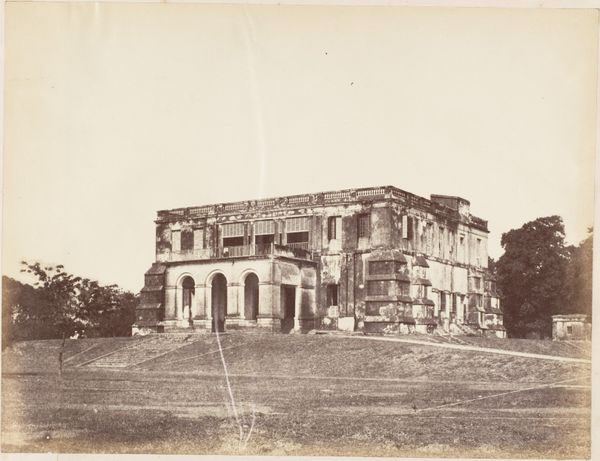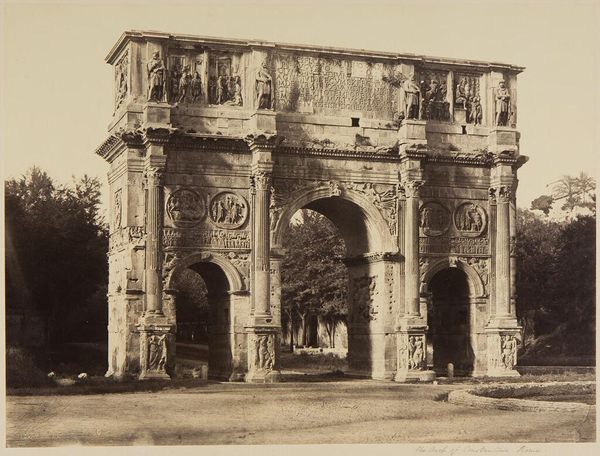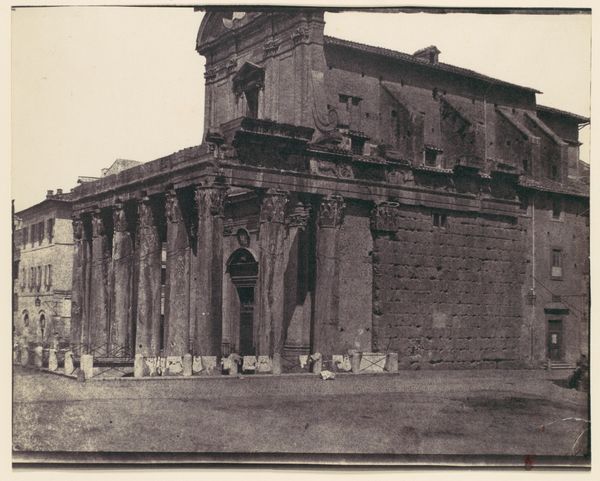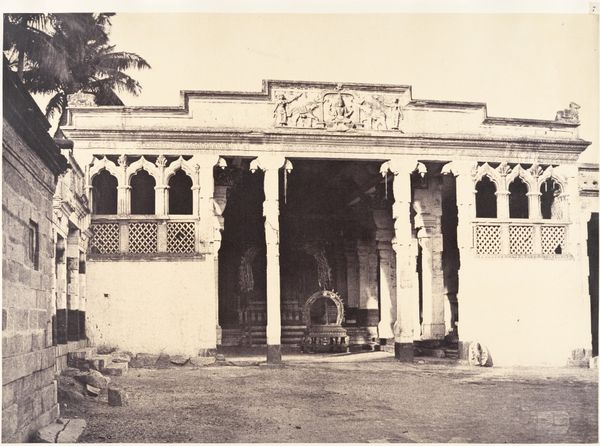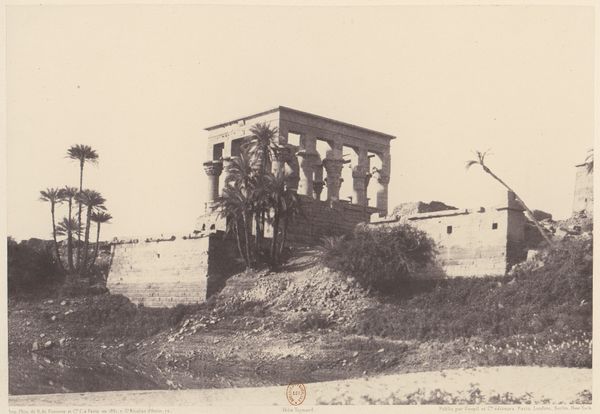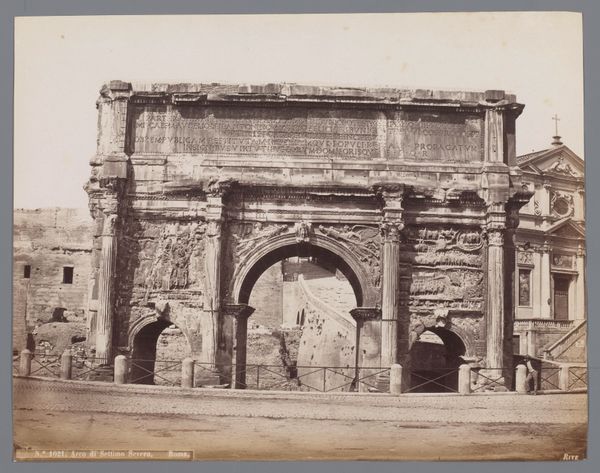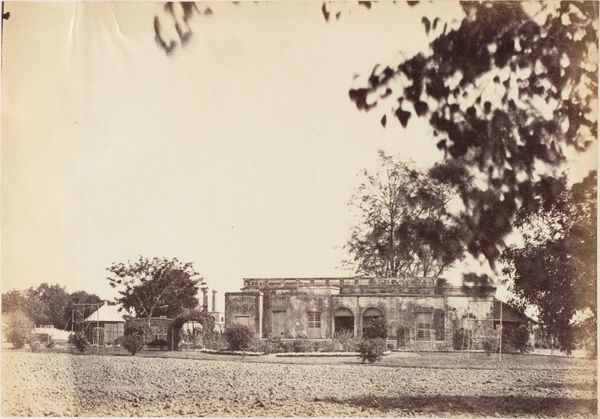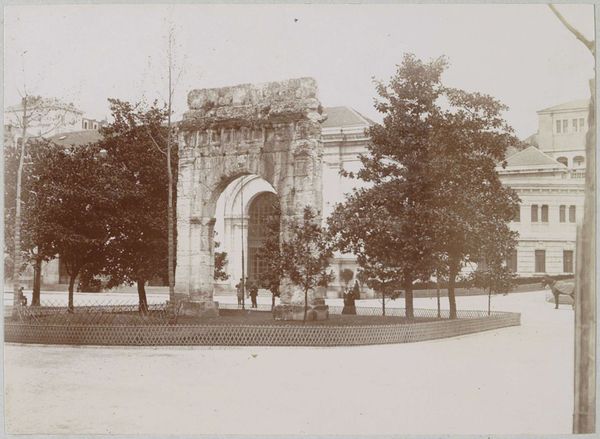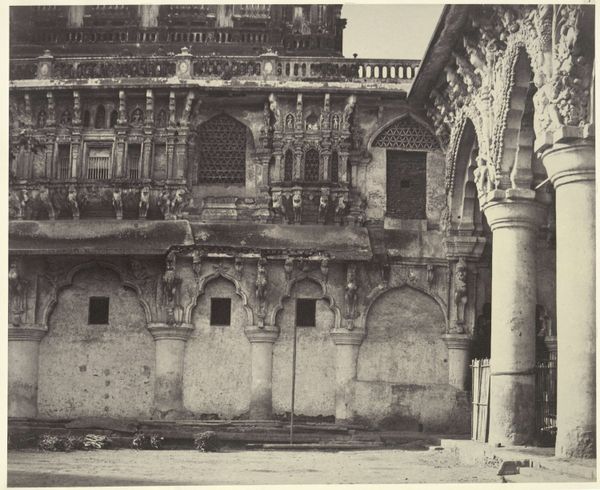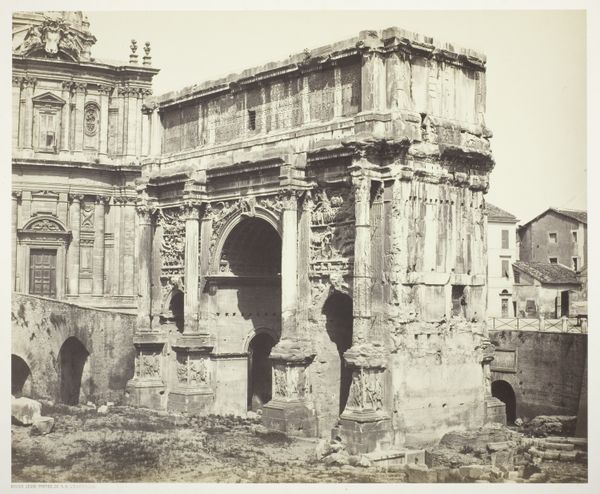
photography, architecture
#
landscape
#
photography
#
historical photography
#
19th century
#
architecture
Dimensions: Image: 26 x 37.2 cm (10 1/4 x 14 5/8 in.) Mount: 45.2 x 57.5 cm (17 13/16 x 22 5/8 in.)
Copyright: Public Domain
Editor: Here we have "The Tamukkam or Tamkam," a photograph taken in 1858 by Linnaeus Tripe. The print really captures this incredible architectural structure in the landscape, but something about it also feels...melancholy. What jumps out at you when you see this piece? Curator: Immediately, I see the fascinating intersection of colonial ambition and photographic technology. Tripe was documenting South Indian architecture under the auspices of the British East India Company. These photographs were meant to serve as visual records, scientific even, but of course, they’re also imbued with the power dynamics of the time. Editor: Power dynamics, how so? Curator: Consider who gets to create the images and for what purpose. This wasn't simply about recording the beauty of the Tamukkam. It was about cataloging, classifying, and ultimately controlling knowledge about India's built environment for colonial administration and audiences back in Britain. How do you think the very act of photographing, of freezing this structure in time, relates to control? Editor: Well, it makes me think about how photography allowed for the wide distribution of images and knowledge, but perhaps only through a specific, Western gaze. So the British public were able to "see" India, but maybe not understand it. It is sort of a constructed view. Curator: Exactly! And think about what Tripe chose to include – or exclude – from his frame. Where are the people? What does this emptiness convey about British perceptions of India at the time? Was it "empty" for them, or did they choose to erase its inhabitants from these landscapes to fit a certain narrative? Editor: That’s a perspective I hadn't fully considered. Looking at the photograph now, it seems less like a neutral depiction and more like a document loaded with intention, influenced by the colonial agenda. Curator: It's a crucial reminder that even seemingly objective art forms like photography can be deeply intertwined with social and political forces. There is always a layer beneath the initial one.
Comments
No comments
Be the first to comment and join the conversation on the ultimate creative platform.
